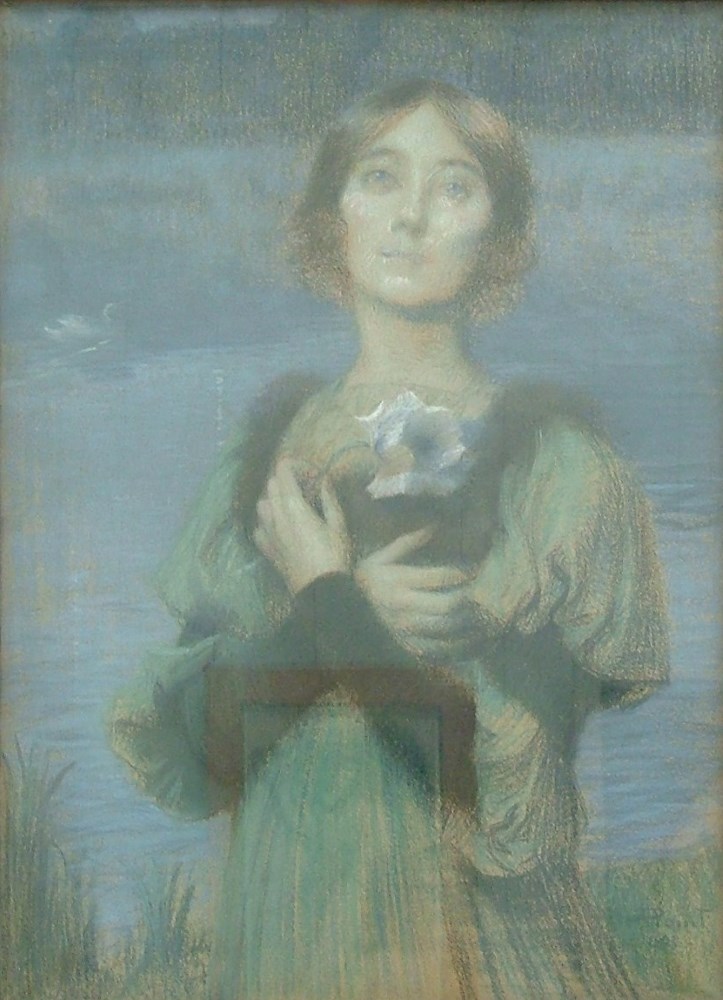Description:
Armand Piont (1860-1932) was a French artist born in Algiers. Initially, he was taught by local artists, debuting with scenes from Algerian life. From 1888 he studied at the École des Beaux-Arts in Paris. Over the years, he successfully exhibited oriental scenes and portraits of women at French Salons. From 1892 to 1896, he was associated with L’Association de l’Ordre du Temple de la Rose-Croix, a group of artists that advocated the supremacy of idealistic and mystical art. In 1893, he went on a scholarship to Italy, where he was fascinated by Renaissance art. After returning to Paris, he was inspired by the theories of William Morris and John Ruskin and the works of the Pre-Raphaelites. In 1896, he founded the “Atelier de Haute-Claire” in Marlotte, breaking away from the Rosicrucian group. There he settled for the next few years. He also worked with enamel, ceramics, glass, goldsmiths and decorative designs in his work.
Description of the painting:
The canvas depicts a young woman frontally, from the waist up. She is dressed in a seledyno-black dress with puff sleeves. The viewer’s gaze is attracted by the crossed hands of the woman on her chest, in which she holds a white flower and her long, slender neck. The woman’s face is idealized, with short, brown hair surrounding it. The background of the woman is a night landscape bathed in moonlight. The artist uses a muted color palette based on shades of blue and green. The almost golden tone of the woman’s body is clearly illuminated by the moonlight falling on the model. The artist, working in pastel technique, uses the possibility of different ways of applying color, thus differentiating the planes. Through long vertical strokes, he gives three-dimensionality to the woman’s dress, and small, irregular strokes create the features of her face. The model was Helène Linder. The artist’s friend, who for years was his inspiration.
Point, as one of the leading representatives of the Rosicrucian group, moved away from realistic representations. The portrait is stylized, the way the model is posed gives the representation a mysterious, spiritual expression. The images captured by the artist were almost visions transferred to the canvas. The woman on the Rogalinska canvas seems to be lost in thought. It is possible that, under the influence of visions, she raises her eyes towards the night sky. She is accompanied by a swan, a symbol not only of beauty, but also of the inspiration of muses and poets and of inner life, which emphasizes the connotation of the painting, which fits into the concept of the Rosicrucians.


